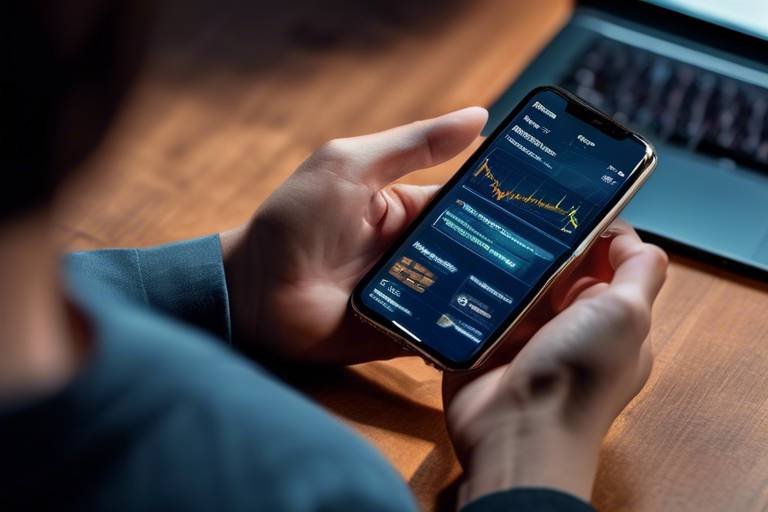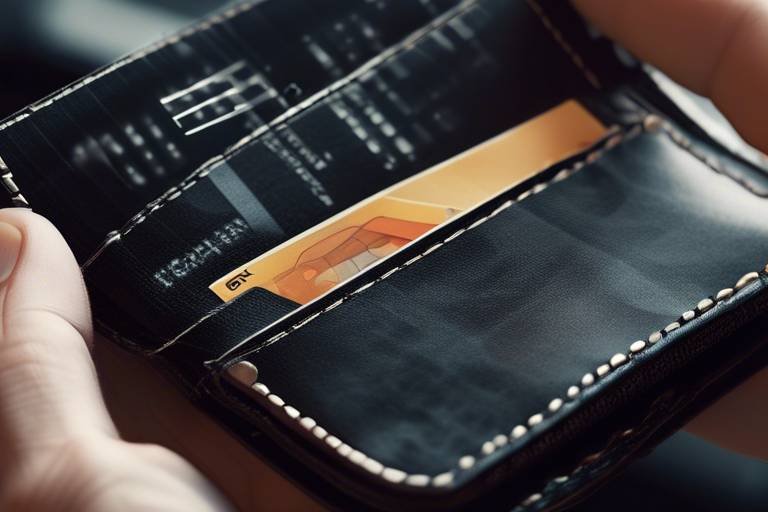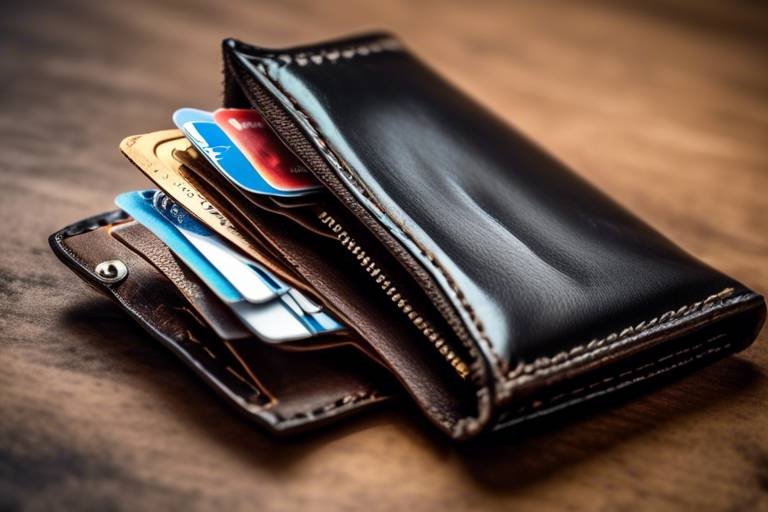How to Set Up a Secure Wallet for Cryptocurrency Trading
In the ever-evolving world of cryptocurrency, securing your digital assets is not just a precaution; it’s a necessity. With the rise of hacking incidents and fraudulent schemes, knowing how to set up a secure wallet for cryptocurrency trading can mean the difference between financial security and devastating loss. Imagine your wallet as a vault, where every coin and token is stored safely behind layers of protection. This article will guide you through the process of establishing a secure wallet, ensuring that your investments are shielded from theft and unauthorized access.
Before diving into the setup process, it’s crucial to understand what cryptocurrency wallets are and how they work. A cryptocurrency wallet is essentially a software program or physical device that allows you to store, send, and receive digital currencies. Think of it as your digital bank account, but instead of dollars, you’re dealing with Bitcoin, Ethereum, and other altcoins. There are two primary types of wallets: hot wallets and cold wallets. Hot wallets are connected to the internet and are ideal for frequent trading, while cold wallets are offline, providing enhanced security for long-term storage. Understanding the nuances of these wallets will help you make informed decisions about your cryptocurrency investments.
When it comes to selecting a cryptocurrency wallet, it’s essential to consider several factors to ensure you choose one that meets your needs. Look for wallets with robust security features, user-friendliness, and compatibility with various cryptocurrencies. A wallet that is easy to navigate can save you a lot of headaches, especially when you’re in a rush to make a trade. Additionally, consider the following:
- Security Features: Look for wallets that offer two-factor authentication, encryption, and backup options.
- User Experience: A wallet should be intuitive and easy to use, even for beginners.
- Compatibility: Ensure the wallet supports the cryptocurrencies you plan to trade.
Understanding the advantages and disadvantages of hot and cold wallets is crucial for anyone serious about cryptocurrency trading. Hot wallets, while convenient, are more vulnerable to hacking because they are connected to the internet. On the other hand, cold wallets, which can be hardware devices or paper wallets, provide a higher level of security since they are offline. However, they are less convenient for frequent trading. So, if you’re planning to trade regularly, a hot wallet might be suitable, but for long-term holding, a cold wallet is the way to go.
Hot wallets come equipped with several security features designed to protect your assets. These include:
- Two-Factor Authentication: This adds an extra layer of security by requiring a second form of verification.
- Encryption: Your data is encrypted, making it harder for hackers to access your information.
- Regular Updates: Keeping your wallet updated ensures you have the latest security patches.
While these features enhance security, it’s essential to remain vigilant and practice safe trading habits.
Cold wallets offer several key benefits that make them an attractive option for long-term cryptocurrency storage. These include:
- Resistance to Hacking: Since they are offline, cold wallets are much less susceptible to cyberattacks.
- Ideal for Long-Term Storage: If you’re planning to hold onto your cryptocurrencies for an extended period, cold wallets are the safest option.
- Backup Options: Many cold wallets allow you to create physical backups, ensuring you won’t lose access to your funds.
Now that you understand the types of wallets available and their respective advantages, let’s get into the nitty-gritty of setting up your chosen cryptocurrency wallet. The process may vary slightly depending on the wallet you choose, but here’s a general outline:
- Download or Purchase: If you’re using a hot wallet, download the software from a reputable source. For cold wallets, purchase a hardware wallet from a trusted vendor.
- Create an Account: Follow the prompts to create your wallet account, ensuring you use a strong password.
- Enable Security Features: Activate two-factor authentication and any other security features available.
- Backup Your Wallet: Make sure to back up your wallet and store the backup in a safe location.
By following these steps, you’ll be well on your way to securing your cryptocurrency assets.
Once your wallet is set up, it’s time to focus on securing it further. Here are some essential tips to keep your cryptocurrency wallet safe:
- Use Strong Passwords: Create complex passwords that are difficult to guess.
- Regular Backups: Regularly back up your wallet to ensure you don’t lose access to your funds.
- Stay Updated: Keep your wallet software up to date to protect against vulnerabilities.
Backing up your wallet is crucial, as it provides a safety net in case you lose access. Most wallets offer recovery options, such as seed phrases or recovery keys. Be sure to write these down and store them in a secure place. Think of it like a spare key to your house; you need it in case you get locked out!
Just like your car needs regular maintenance to run smoothly, your cryptocurrency wallet requires periodic updates and checks. Regularly updating your wallet software can help protect against new threats and vulnerabilities that may arise over time. Additionally, routinely check your wallet settings and security features to ensure everything is functioning as it should.
1. What is the safest type of cryptocurrency wallet?
Cold wallets are generally considered the safest option for storing cryptocurrencies long-term due to their offline nature.
2. Can I use multiple wallets?
Yes! Many traders use a combination of hot and cold wallets to balance convenience and security.
3. What should I do if I lose my wallet?
If you’ve backed up your wallet and have your recovery phrase, you can restore access. If not, you may lose access to your funds permanently.
4. How often should I update my wallet?
Regularly check for updates and apply them promptly, ideally whenever a new version is released.
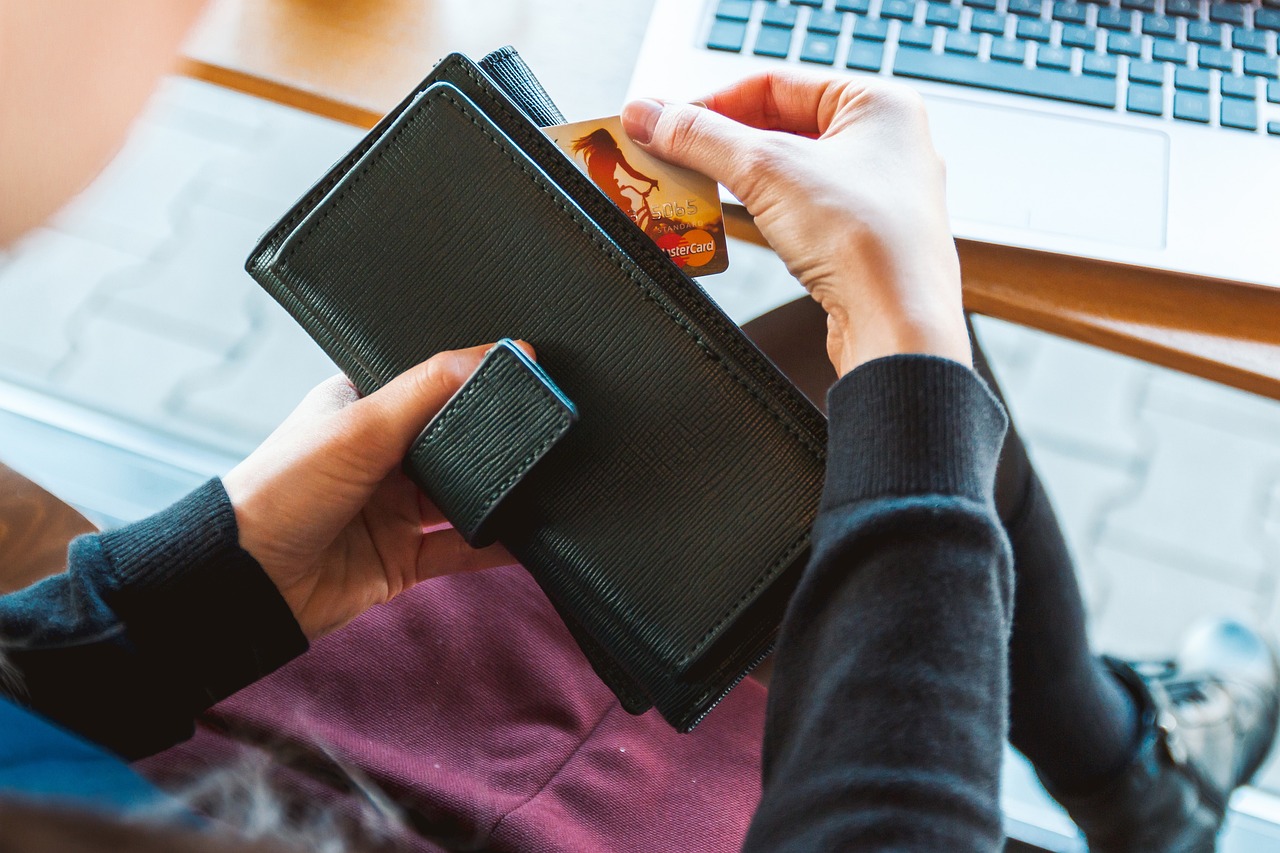
Understanding Cryptocurrency Wallets
When diving into the world of cryptocurrency, one of the first things you'll encounter is the concept of cryptocurrency wallets. Think of a wallet as your digital bank account, where you store your coins, tokens, and other digital assets. However, unlike traditional wallets, cryptocurrency wallets come in various forms and functionalities, each with its unique features and security measures. Understanding these wallets is crucial for anyone looking to trade or invest in cryptocurrencies.
At their core, cryptocurrency wallets are designed to store your private and public keys. The public key is like your bank account number—it's safe to share and is used to receive funds. On the other hand, your private key is akin to your PIN or password; it must be kept secret at all costs. If someone gains access to your private key, they can control your funds. Thus, the security of your wallet is paramount.
There are two main types of cryptocurrency wallets: hot wallets and cold wallets. Hot wallets are connected to the internet and are convenient for frequent trading. They allow for quick access to your funds, making them ideal for day-to-day transactions. On the flip side, cold wallets are offline storage solutions, providing a higher level of security for long-term holdings. They are less susceptible to hacking, making them a popular choice for investors who prefer to hold their assets for extended periods.
To give you a clearer picture, let's break down the differences between hot and cold wallets in the table below:
| Type of Wallet | Connection | Security Level | Best For |
|---|---|---|---|
| Hot Wallet | Connected to the Internet | Lower | Frequent Trading |
| Cold Wallet | Offline | Higher | Long-term Storage |
Choosing between these wallet types depends on your trading habits and security preferences. If you’re a trader who likes to make quick moves, a hot wallet might be your best bet. However, if you’re more of a long-term investor, a cold wallet will provide peace of mind knowing that your assets are safe from online threats.
In summary, understanding the different types of cryptocurrency wallets is essential for anyone stepping into the crypto realm. By knowing how they function, you can make informed decisions about where to store your digital assets. Remember, the security of your wallet is just as important as the cryptocurrencies you hold, so choose wisely!
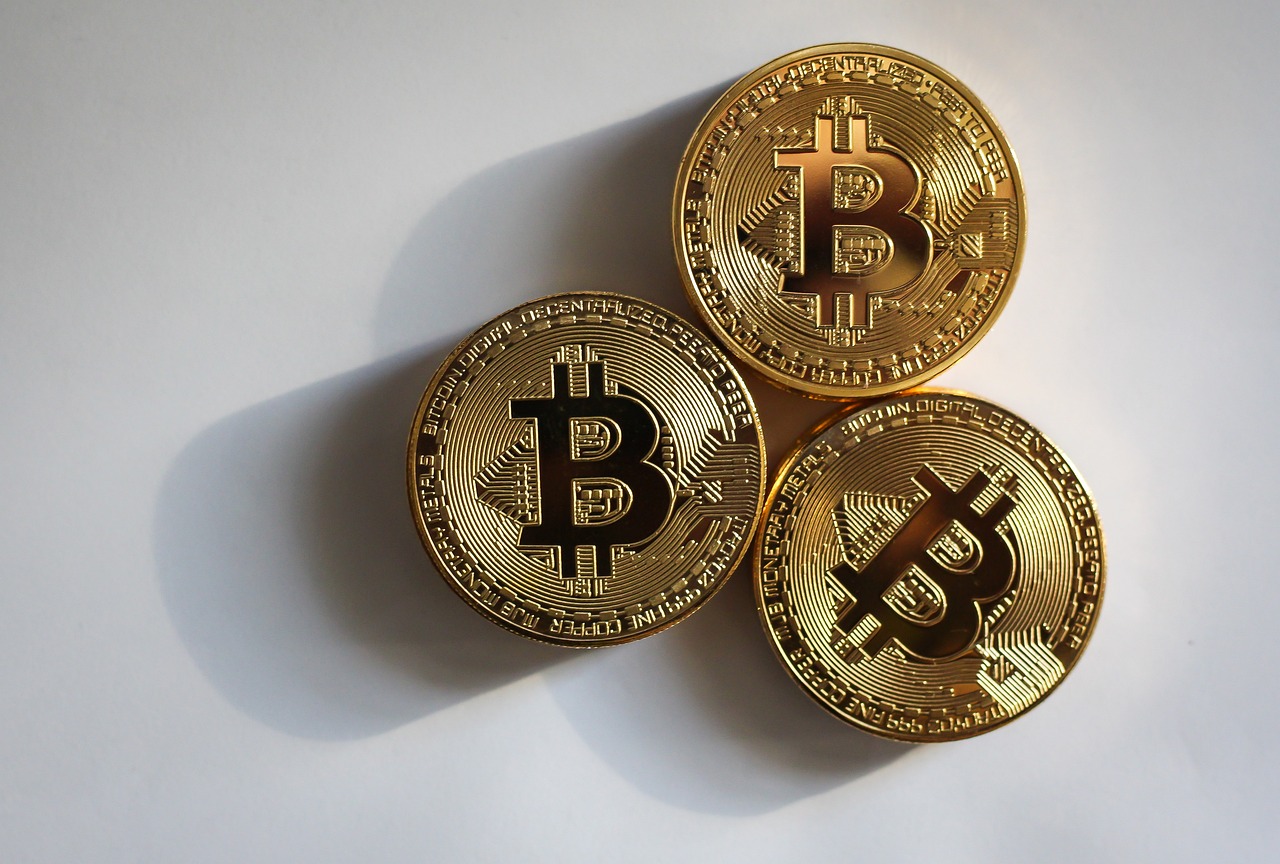
Choosing the Right Wallet
When diving into the world of cryptocurrency, one of the most critical decisions you'll make is choosing the right wallet. Think of a cryptocurrency wallet as your digital bank account; it’s where you store your assets, and just like a bank, you want to ensure it's secure and reliable. But with so many options available, how do you find the perfect fit for your needs?
First, consider the security features. This is paramount! A wallet with robust security measures can mean the difference between a safe investment and losing everything to a hacker. Look for wallets that offer features like two-factor authentication, encryption, and multi-signature support. These features add layers of protection, making it harder for unauthorized users to access your assets.
Next, think about user-friendliness. If you’re new to cryptocurrency, you don’t want a wallet that feels like it requires a degree in computer science to navigate. A wallet with an intuitive interface can make your trading experience much smoother. Look for wallets that provide clear instructions and have a supportive community or customer service to assist you when needed.
Another important factor is compatibility. Not all wallets support every cryptocurrency. If you have a diverse portfolio, ensure your chosen wallet can handle all the coins you plan to trade. Some wallets are multi-currency, while others are designed for specific cryptocurrencies. Always check the list of supported coins before making your choice.
To help you visualize these considerations, here’s a simple comparison table:
| Wallet Type | Security Features | User-Friendliness | Compatibility |
|---|---|---|---|
| Hot Wallet | Two-Factor Authentication, Encryption | Easy to Use | Supports Multiple Cryptos |
| Cold Wallet | High Security, Offline Storage | May Require Technical Know-How | Limited to Specific Cryptos |
Now, let’s not forget about the cost. Some wallets charge fees for transactions or for using certain features. It's essential to read the terms and conditions carefully to avoid any surprises later on. Remember, while a wallet may be free, it’s crucial to consider the potential costs associated with trading and withdrawals.
Finally, always check for reviews and feedback from other users. The cryptocurrency community is vibrant and full of insights. Platforms like Reddit or specialized forums can provide firsthand experiences that might help you make a more informed decision. Engaging with others who have already navigated the wallet selection process can be invaluable.
In summary, choosing the right wallet is a balancing act of security, usability, compatibility, cost, and community feedback. By taking the time to evaluate these factors, you’ll be well on your way to safeguarding your cryptocurrency investments and trading with confidence.

Hot Wallets vs. Cold Wallets
When diving into the world of cryptocurrency, one of the first choices you'll face is whether to use a hot wallet or a cold wallet. It's a bit like deciding whether to keep your cash in your pocket or in a safe at home. Each option comes with its own set of advantages and disadvantages that can significantly impact the security and accessibility of your digital assets.
Hot wallets are digital wallets that are connected to the internet. They are incredibly convenient for trading and making transactions quickly. Imagine you're at a market, and you need to grab something right away; that’s how hot wallets operate. They allow you to access your funds instantly, making them ideal for active traders. However, this convenience comes at a cost. Because they are online, hot wallets are more vulnerable to hacking attempts and malware attacks. Security features such as two-factor authentication and encryption are crucial for these wallets, but they can never be as secure as their offline counterparts.
On the flip side, we have cold wallets, which are not connected to the internet. Think of them as your home safe. While they may not be as accessible for quick transactions, they offer a much higher level of security, making them perfect for long-term storage of your cryptocurrencies. Cold wallets can take the form of hardware devices or paper wallets, and they are generally immune to online threats. This means your assets are much safer from hackers, but you must take extra care to keep them secure physically. If you lose your cold wallet or it gets damaged, recovering your assets can be a nightmare.
| Feature | Hot Wallets | Cold Wallets |
|---|---|---|
| Accessibility | High - Easy to access and use | Low - Requires more steps to access |
| Security | Moderate - Vulnerable to online threats | High - Immune to online hacking |
| Use Case | Best for trading and frequent transactions | Best for long-term storage |
| Backup Options | Often cloud-based, less secure | Physical backups, more secure |
In summary, the choice between hot and cold wallets boils down to your specific needs. If you're an active trader, a hot wallet may be the more practical option, but always ensure you implement strong security measures. On the other hand, if you're looking to hold your cryptocurrencies long-term, a cold wallet is the way to go. Ultimately, many users find a combination of both wallets works best, allowing them to enjoy the benefits of quick access while keeping the majority of their assets securely stored away.
- What is a hot wallet? A hot wallet is a type of cryptocurrency wallet that is connected to the internet, allowing for quick transactions and easy access to funds.
- What is a cold wallet? A cold wallet is an offline storage solution for cryptocurrencies, providing enhanced security against online threats.
- Which wallet is safer? Cold wallets are generally considered safer due to their offline nature, while hot wallets are more vulnerable to hacking.
- Can I use both types of wallets? Yes, many users choose to use both hot and cold wallets to balance accessibility and security.

Security Features of Hot Wallets
When it comes to cryptocurrency trading, hot wallets are a popular choice due to their accessibility and convenience. However, this convenience comes with its own set of security challenges. To ensure your digital assets remain safe while using a hot wallet, it’s crucial to understand the various security features that these wallets offer. One of the primary features is two-factor authentication (2FA). This adds an extra layer of security by requiring not only your password but also a second form of verification, such as a code sent to your mobile device. This means that even if someone manages to get hold of your password, they would still need access to your phone to gain entry to your wallet.
Another essential security feature is encryption. Hot wallets typically encrypt your private keys, making it much harder for unauthorized users to access your funds. Encryption acts like a digital safe, ensuring that your sensitive information is scrambled and unreadable without the correct decryption key. This is particularly important in the world of cryptocurrency, where the stakes are high, and the potential for loss is significant.
Additionally, many hot wallets offer multi-signature support. This feature requires multiple keys to authorize a transaction, which can significantly reduce the risk of theft. For instance, if you hold a wallet that requires three signatures to execute a transaction, a hacker would need to compromise three separate keys to steal your assets, making it much less likely that they would succeed.
Furthermore, keeping your software up-to-date is another vital aspect of hot wallet security. Developers regularly release updates to fix vulnerabilities and enhance security features. By ensuring that your wallet is always running the latest version, you protect yourself from potential exploits that hackers might leverage to gain unauthorized access.
Lastly, it’s essential to be aware of phishing attacks, which are increasingly common in the cryptocurrency space. Many hot wallets have built-in features to help users recognize and avoid these scams. For example, some wallets will alert you if you attempt to access a suspicious link or website that could compromise your wallet’s security. Always remember, while hot wallets are convenient, they require you to be vigilant and proactive about your security.
In summary, while hot wallets provide a user-friendly option for managing your cryptocurrency, understanding and utilizing their security features is crucial. By leveraging two-factor authentication, encryption, multi-signature support, software updates, and being cautious of phishing attempts, you can significantly enhance the security of your digital assets.
- What is a hot wallet? A hot wallet is a type of cryptocurrency wallet that is connected to the internet, allowing for quick and easy access to your digital assets.
- Are hot wallets safe? While they offer convenience, hot wallets are generally less secure than cold wallets. However, utilizing strong security features can mitigate some risks.
- What should I do if I think my wallet has been compromised? Immediately change your passwords, enable two-factor authentication, and consider moving your assets to a more secure wallet.
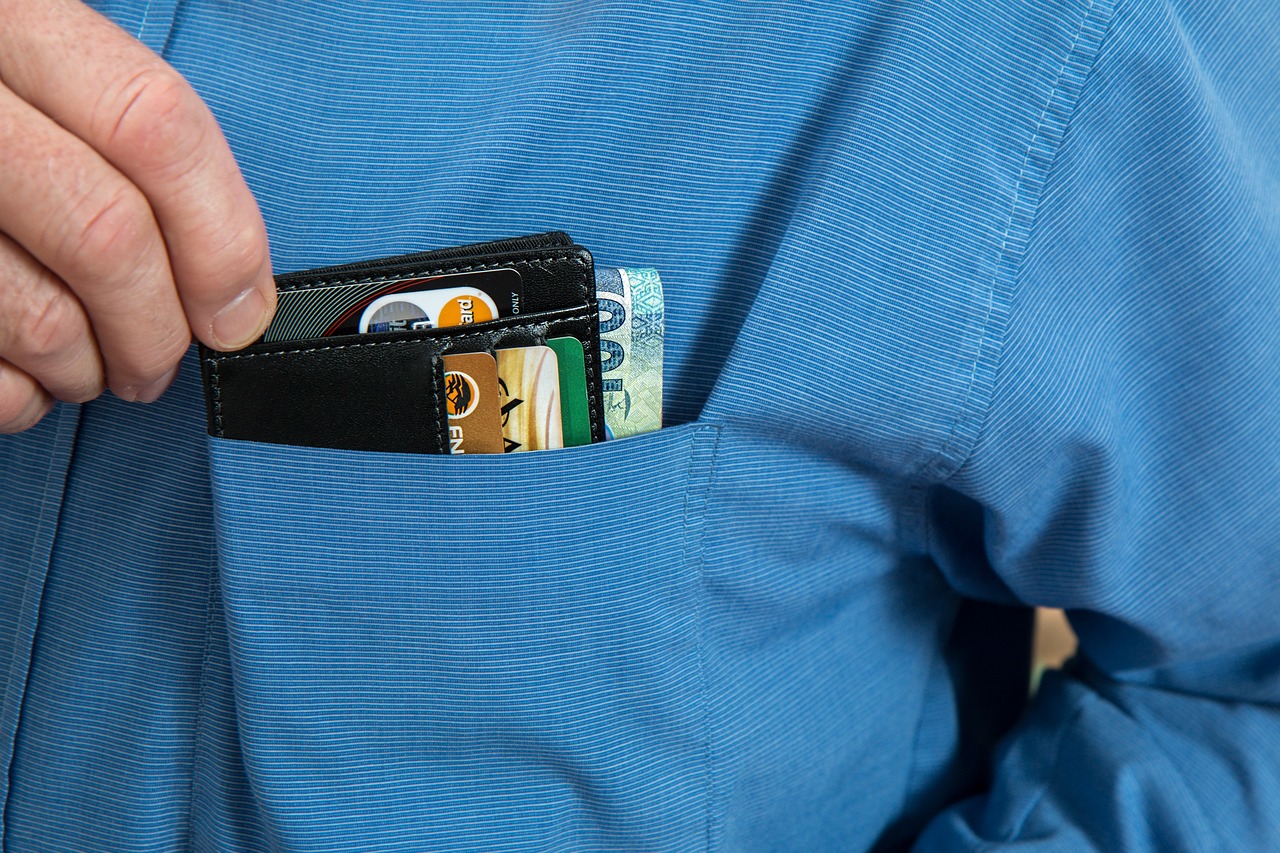
Benefits of Using Cold Wallets
When it comes to safeguarding your cryptocurrency investments, cold wallets are often regarded as the gold standard. But why is that? Well, imagine your digital assets are like precious jewels. Would you keep them in a flimsy box under your bed or in a secure vault? Cold wallets act as that secure vault for your cryptocurrencies, providing a level of protection that is hard to beat.
One of the primary benefits of using cold wallets is their enhanced security. Since they are not connected to the internet, they are virtually immune to online hacking attempts. This means that even the most sophisticated cybercriminals find it nearly impossible to access your funds. In contrast, hot wallets, which are connected to the internet, are much more vulnerable to security breaches. Think of cold wallets as a fortress, while hot wallets are more like a house with the door wide open.
Another significant advantage of cold wallets is their long-term storage capability. If you plan on holding onto your cryptocurrencies for an extended period, cold wallets are ideal. They allow you to store your assets safely without the constant worry of market fluctuations or potential hacks. This is particularly beneficial for investors who prefer a buy-and-hold strategy. With a cold wallet, you can rest easy knowing your investments are securely tucked away, much like a savings account that you rarely touch.
Moreover, cold wallets often come with user-friendly features that make managing your cryptocurrencies straightforward. Many cold wallets offer easy recovery options, ensuring that if you ever misplace your wallet or forget your access credentials, you can still regain access to your funds. This is crucial in the world of cryptocurrency, where losing access can mean losing your entire investment.
Additionally, cold wallets support a wide range of cryptocurrencies, making them versatile for users who hold multiple digital assets. Whether you're dealing with Bitcoin, Ethereum, or lesser-known altcoins, a cold wallet can cater to your diverse portfolio. This flexibility is a significant draw for both new and seasoned investors who want to keep their options open.
In summary, the benefits of using cold wallets are clear:
- Enhanced Security: Offline storage reduces the risk of hacks.
- Long-term Storage: Ideal for investors looking to hold assets for an extended period.
- User-friendly Features: Easy recovery options for lost access.
- Versatility: Supports multiple cryptocurrencies.
In a world where digital assets are becoming increasingly valuable, investing in a cold wallet is not just a wise decision; it’s a necessary step towards protecting your wealth. By treating your cryptocurrencies with the same care you would with physical assets, you can ensure their safety and longevity.
Q1: What is a cold wallet?
A cold wallet is a type of cryptocurrency wallet that is not connected to the internet, providing a secure way to store digital assets offline.
Q2: Are cold wallets completely safe?
While cold wallets offer enhanced security, no storage method is entirely foolproof. It's essential to follow best practices for backup and recovery.
Q3: Can I access my cold wallet anytime?
Yes, you can access your cold wallet whenever you need it, but you will need to connect it to a device to do so, which may require some setup.
Q4: How do I choose the right cold wallet?
Consider factors such as security features, ease of use, and compatibility with the cryptocurrencies you hold when selecting a cold wallet.
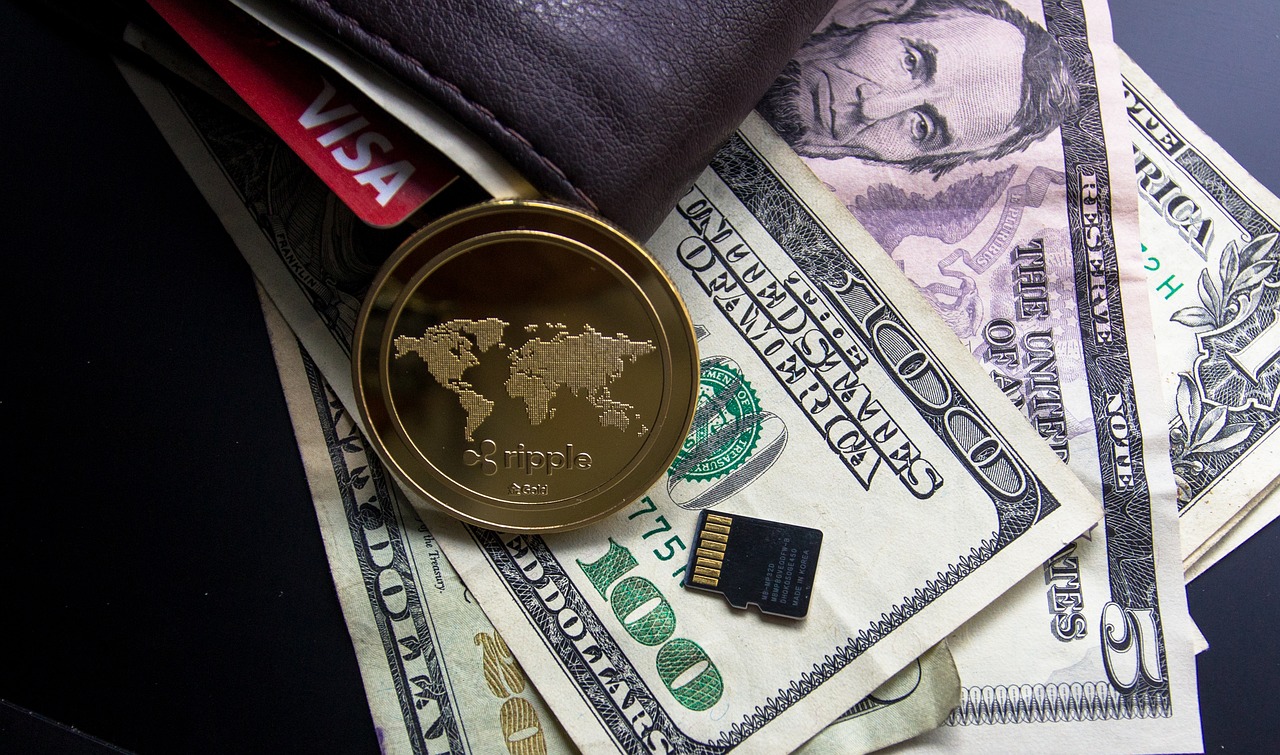
Setting Up Your Wallet
Setting up your cryptocurrency wallet is a crucial step towards safeguarding your digital assets. It's not just about convenience; it's about ensuring that your hard-earned investments are secure from potential threats. The process might seem daunting at first, but with the right guidance, you can have your wallet up and running in no time. To kick things off, you need to choose the type of wallet that suits your needs—be it a hot wallet for quick access or a cold wallet for long-term storage. So, let’s dive into the step-by-step process of setting up your wallet!
First, you’ll want to download the wallet software or purchase a hardware wallet, depending on your choice. For hot wallets, popular options include software like Exodus or Coinbase Wallet, which you can easily download from their official websites or app stores. If you’re leaning towards a cold wallet, consider investing in hardware wallets like Ledger or Trezor. These devices are designed specifically to keep your cryptocurrencies safe from online threats.
Once you have your wallet software or hardware ready, it's time to install or set it up. For software wallets, follow the installation prompts on your device. Make sure to download the software from the official site to avoid any phishing attempts. After installation, you’ll be prompted to create a new wallet. During this process, you'll generate a seed phrase, which is a series of words that act as a backup for your wallet. This phrase is extremely important—treat it like the key to your safe! Store it securely, preferably offline, and never share it with anyone.
For hardware wallets, the setup is a bit different. You’ll need to connect the device to your computer and follow the manufacturer's instructions. This typically involves initializing the device, creating a PIN code, and writing down your recovery seed. Again, this seed is your lifeline; losing it could mean losing access to your funds forever!
After you’ve set up your wallet, the next step is to secure it further. Enable two-factor authentication (2FA) if your wallet supports it. This adds an extra layer of security by requiring a second form of verification, usually a code sent to your mobile device. Additionally, regularly update your wallet software to ensure you have the latest security features. Cyber threats evolve, and staying ahead of them is key to protecting your investments.
Finally, before you start trading or investing, it’s wise to familiarize yourself with the wallet's interface. Explore its features, understand how to send and receive cryptocurrencies, and learn how to check your balance. This familiarity will not only enhance your trading experience but also boost your confidence in managing your digital assets.
In summary, setting up your cryptocurrency wallet is a straightforward process that involves choosing the right type of wallet, installing the software or hardware, securing it with strong passwords and 2FA, and getting comfortable with its functionalities. Remember, the security of your digital assets largely depends on how well you set up and manage your wallet.
- What is a seed phrase? A seed phrase is a series of words that allows you to recover your wallet. It's crucial for accessing your funds if you lose your device or forget your password.
- How do I choose between a hot wallet and a cold wallet? If you need frequent access to your funds for trading, a hot wallet may be suitable. For long-term storage, a cold wallet is generally safer.
- Can I use multiple wallets? Yes, many users opt for multiple wallets to diversify their security and manage different types of cryptocurrencies.
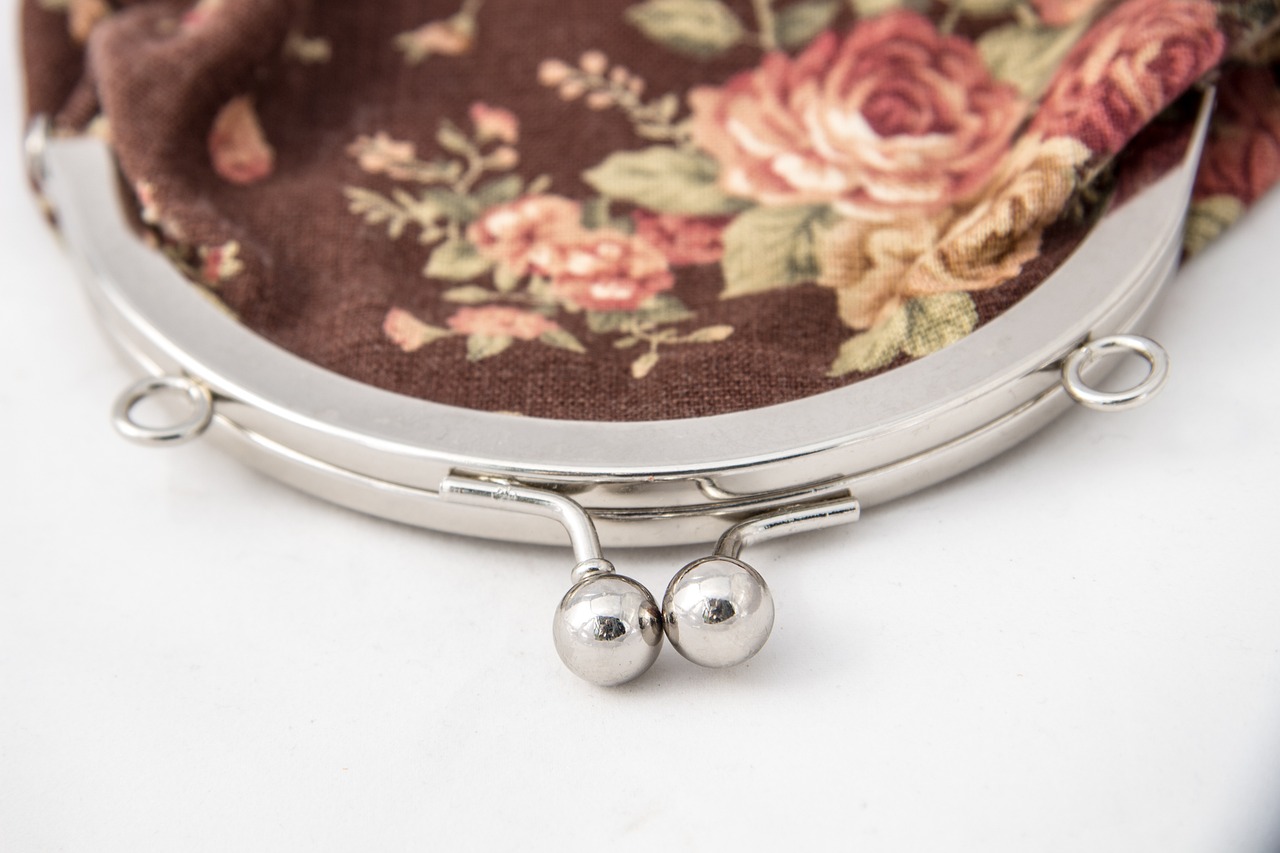
Securing Your Wallet
When it comes to cryptocurrency, securing your wallet is as crucial as having a strong lock on your front door. After all, your digital assets are precious, and you wouldn’t want them to fall into the wrong hands, would you? In this section, we’ll explore essential tips and strategies to ensure that your cryptocurrency wallet remains safe and sound. Think of your wallet as a treasure chest; the more precautions you take, the less likely it is that a pirate will come along and steal your gold!
First and foremost, using strong passwords is your first line of defense. A password should be a mix of uppercase and lowercase letters, numbers, and special characters. Avoid using easily guessable information like birthdays or names. Instead, create a passphrase—a string of random words that is both memorable and difficult to crack. For example, “PurpleElephant!Dances@InTheRain” is much stronger than “password123.”
Next, consider enabling two-factor authentication (2FA). This extra layer of security requires not just your password but also a second form of identification, usually a temporary code sent to your mobile device. Even if someone manages to get hold of your password, they would still need access to your phone to get into your wallet, making it significantly harder for them to breach your account.
Backing up your wallet is another critical step. Imagine losing your wallet and all its contents; it's a nightmare scenario! To avoid this, regularly back up your wallet data. Most wallets offer an option to create a backup file that you can store in a secure location, such as an encrypted USB drive or a secure cloud storage service. Make sure to keep multiple copies in different locations for added security.
Keeping your wallet software updated is equally important. Developers frequently release updates to fix vulnerabilities and improve security features. By not updating, you leave your wallet open to potential threats. Set your wallet to update automatically if possible, or make it a habit to check for updates regularly. Think of it as getting your car serviced; neglecting it could lead to bigger problems down the road.
Lastly, be cautious of phishing attempts. Scammers often try to trick you into revealing your credentials through fake emails or websites. Always double-check URLs and never click on suspicious links. It’s like checking the locks on your doors; a little vigilance goes a long way in keeping your treasures safe.
In summary, securing your cryptocurrency wallet involves a combination of strong passwords, two-factor authentication, regular backups, software updates, and vigilance against phishing attacks. By implementing these strategies, you can significantly reduce the risk of unauthorized access and ensure that your digital assets remain protected.
- What is the best way to secure my cryptocurrency wallet? Use strong passwords, enable two-factor authentication, and regularly back up your wallet.
- How often should I update my wallet software? It's best to check for updates weekly or set your wallet to update automatically.
- Can I recover my wallet if I lose access? Yes, if you have backed up your wallet, you can restore it using your backup file.
- What should I do if I receive a suspicious email about my wallet? Do not click any links and verify the sender's email address. Always log in to your wallet through the official website.
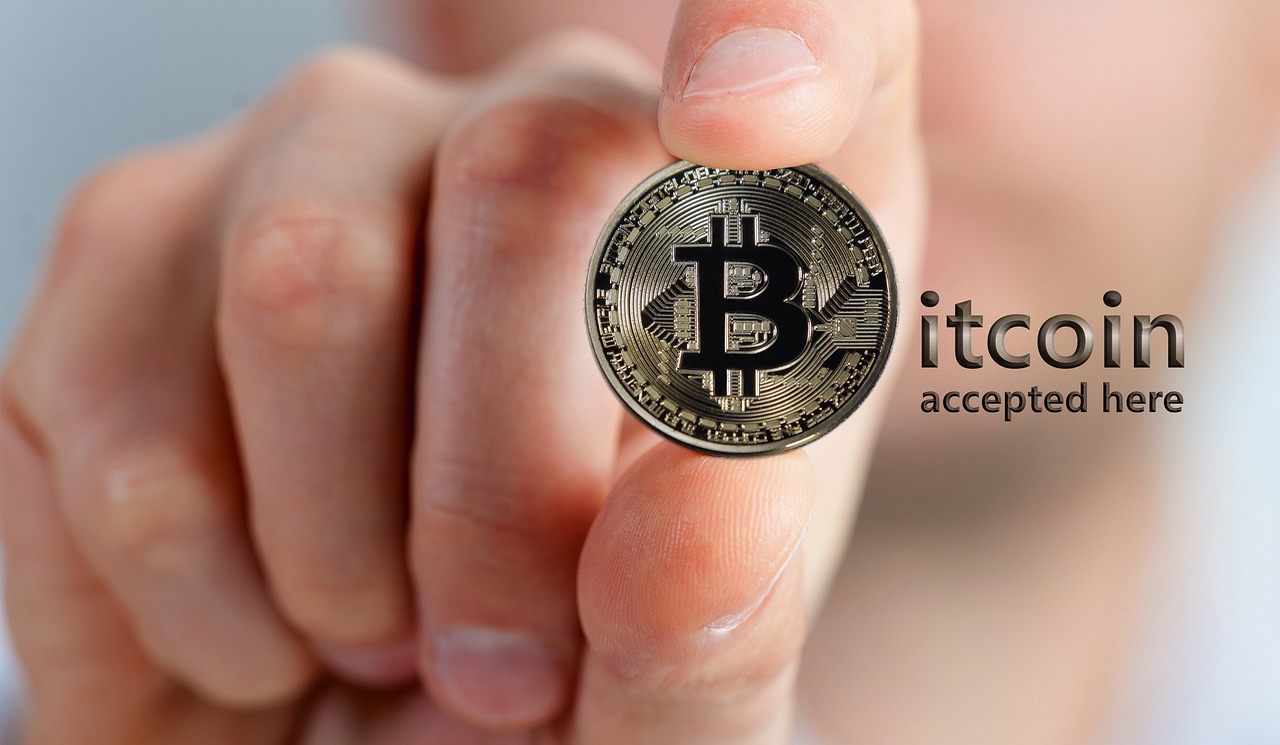
Backup and Recovery Options
When it comes to cryptocurrency wallets, are essential components that can mean the difference between losing your digital assets forever and retrieving them with ease. Imagine this: you’ve spent countless hours trading and accumulating a fortune in cryptocurrencies, only to realize that your wallet is inaccessible due to a lost password or a corrupted device. Heart-stopping, right? This is why understanding how to effectively back up your wallet and what recovery options are available is crucial.
First and foremost, it’s vital to create a backup of your wallet as soon as you set it up. Most wallets provide an option to generate a recovery phrase, often referred to as a seed phrase. This phrase typically consists of 12 to 24 random words and acts as a master key to your wallet. If you ever find yourself in a pinch, this phrase can be used to restore your wallet on a different device or software. Make sure to write it down and store it in a safe, secure location—think of it as your digital safety deposit box.
In addition to the seed phrase, consider regularly exporting your wallet data. This can include transaction histories and account balances, which can be helpful if you need to switch wallets or if your current wallet experiences technical issues. Always ensure that this data is stored securely, preferably in an encrypted format, to protect it from unauthorized access.
Now, let’s talk about recovery options. If you lose access to your wallet, the recovery process will depend on the type of wallet you are using. For hot wallets, many platforms offer customer support that can guide you through the recovery process, especially if you have your recovery phrase handy. However, for cold wallets, the recovery process can be slightly more complex. Always refer to the manufacturer’s guidelines for your specific cold wallet model to understand the recovery steps.
Here’s a quick table summarizing the backup and recovery options for different types of wallets:
| Wallet Type | Backup Options | Recovery Options |
|---|---|---|
| Hot Wallet | Seed Phrase, Export Data | Customer Support, Seed Phrase |
| Cold Wallet | Seed Phrase, Physical Backup | Manufacturer Guidelines, Seed Phrase |
In conclusion, treating your cryptocurrency wallet with the same care you would a physical wallet is essential. By implementing robust backup and recovery strategies, you can safeguard your investments against unforeseen circumstances. After all, a little preparation goes a long way in the volatile world of cryptocurrency.
- What is a seed phrase? A seed phrase is a series of words generated by your wallet that allows you to restore access if you lose your wallet.
- How often should I back up my wallet? It’s advisable to back up your wallet whenever you make significant changes, such as adding new cryptocurrencies or making large transactions.
- What should I do if I lose my seed phrase? If you lose your seed phrase, you may lose access to your wallet permanently. Always store it in a secure location.
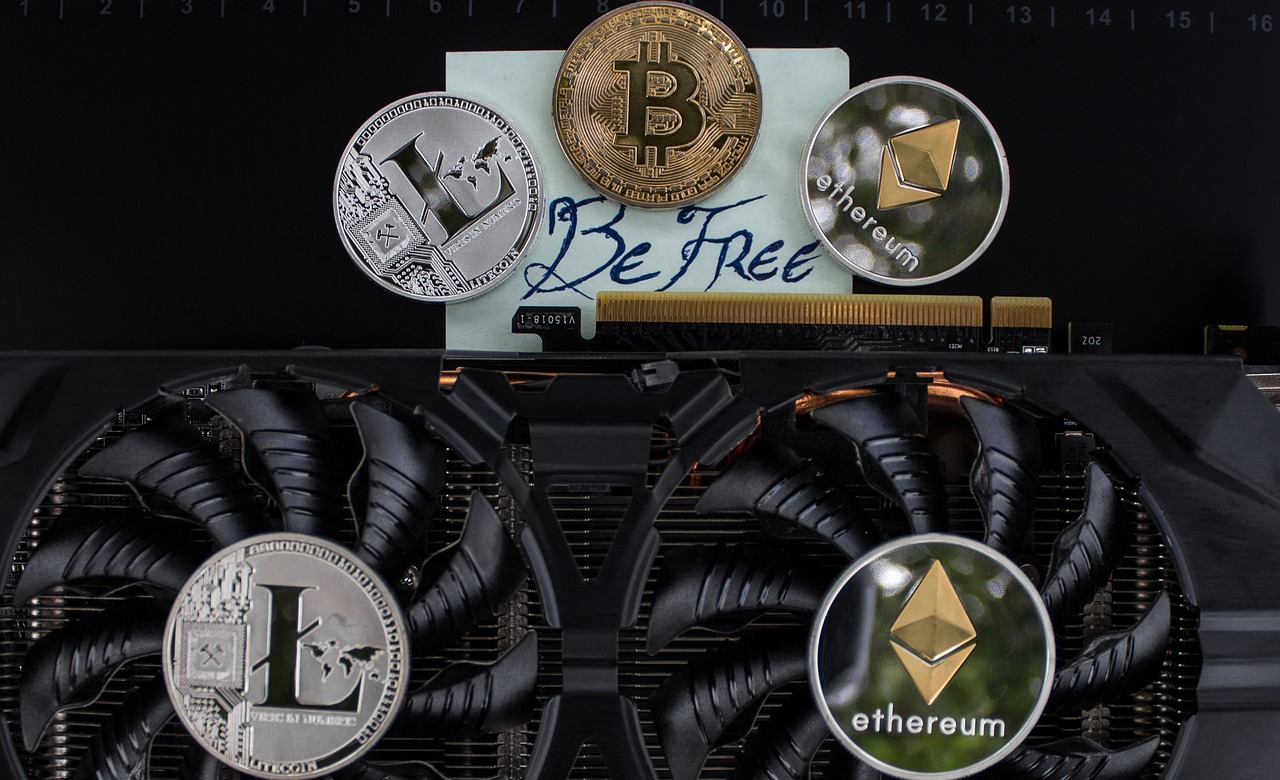
Regular Maintenance and Updates
When it comes to cryptocurrency wallets, think of them as your digital vaults. Just like you wouldn't leave your physical vault unattended or ignore its upkeep, your digital wallet requires regular maintenance and updates to ensure it remains secure. Imagine your wallet as a house; if you don't regularly check for leaks, pests, or outdated locks, you're inviting trouble. In the world of cryptocurrency, this 'trouble' can manifest as hacks or unauthorized access to your valuable assets.
One of the critical aspects of maintaining your wallet is keeping the software updated. Wallet developers frequently release updates that address security vulnerabilities, introduce new features, and improve overall performance. Ignoring these updates is akin to leaving your door wide open while hoping no one will walk in. Always check for updates from your wallet provider and install them promptly. This simple act can significantly bolster your wallet's defenses against potential threats.
Additionally, it's essential to regularly review your wallet's security settings. This includes checking your two-factor authentication (2FA) settings, which add an extra layer of protection. If you've enabled 2FA, ensure that the method you use (like an authentication app or SMS) is still secure and up to date. If you notice any suspicious activity or if your device is compromised, consider changing your authentication method immediately.
Another important factor is to routinely back up your wallet. Think of backups as your safety net; if something goes wrong, having a backup ensures you can recover your assets. Depending on the type of wallet you use, the backup process may vary. For hot wallets, make sure to back up your private keys and recovery phrases securely. For cold wallets, ensure that your physical backup is stored in a safe place, away from potential disasters.
Lastly, don't forget to conduct regular audits of your wallet activity. This means keeping an eye on your transactions and checking for any unauthorized access. If you notice any discrepancies or unfamiliar transactions, act quickly! Report any suspicious activity to your wallet provider and take necessary precautions, such as changing your passwords and enhancing your security settings.
In summary, regular maintenance and updates of your cryptocurrency wallet are vital for keeping your digital assets safe. By staying proactive and attentive, you can significantly reduce the risk of losing your investments to cyber threats. Remember, in the fast-paced world of cryptocurrency, it's better to be safe than sorry!
- How often should I update my wallet software? It's advisable to check for updates at least once a month, or whenever your wallet provider releases a new version.
- What should I do if I suspect my wallet has been compromised? Immediately change your passwords, enable two-factor authentication, and contact your wallet provider for assistance.
- Can I recover my wallet if I lose my backup? If you've lost your backup and don't have your recovery phrase, unfortunately, you may not be able to recover your wallet.
- Are cold wallets immune to hacks? While cold wallets are much more secure than hot wallets, they are not completely immune. Always practice good security hygiene.
Frequently Asked Questions
- What is a cryptocurrency wallet?
A cryptocurrency wallet is a digital tool that allows you to store, send, and receive cryptocurrencies. It can be software-based (hot wallets) or hardware-based (cold wallets), each serving different purposes and security levels.
- How do I choose the right wallet for my needs?
When selecting a wallet, consider factors such as security features, user-friendliness, compatibility with various cryptocurrencies, and whether you prefer a hot or cold wallet based on your trading habits.
- What are the main differences between hot wallets and cold wallets?
Hot wallets are connected to the internet, making them convenient for trading but potentially vulnerable to hacks. Cold wallets, on the other hand, are offline and provide enhanced security, making them ideal for long-term storage.
- What security features should I look for in a hot wallet?
Look for features like two-factor authentication, encryption, and regular software updates. These measures help protect your assets while you trade online.
- Why should I consider using a cold wallet?
Cold wallets offer significant advantages, including resistance to hacking attempts and being better suited for long-term storage of your cryptocurrencies. They keep your assets safe from online threats.
- How do I set up my cryptocurrency wallet?
Setting up your wallet typically involves downloading the wallet software or purchasing a hardware wallet, following the installation instructions, and ensuring you implement best practices for security during the setup process.
- What are some essential tips for securing my wallet?
Use strong, unique passwords, enable two-factor authentication, regularly back up your wallet, and keep your software updated to minimize the risk of unauthorized access.
- How can I back up my wallet?
Most wallets provide an option to create a backup. This usually involves saving a recovery phrase or exporting your wallet data to a secure location. It's crucial to keep this backup safe and secure.
- What should I do if I lose access to my wallet?
If you lose access, you can use your backup recovery phrase or keys to restore your wallet. Always ensure you have a backup in place to avoid losing your assets permanently.
- Why is regular maintenance important for my wallet?
Regular maintenance and updates help protect against vulnerabilities and ensure your wallet is equipped with the latest security features. This practice is essential for keeping your assets safe.




